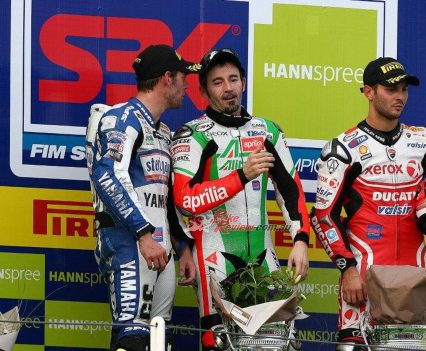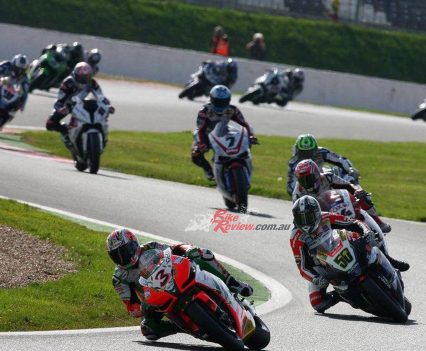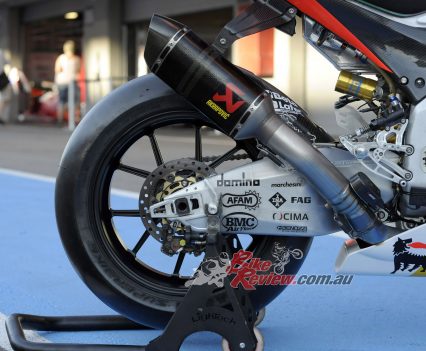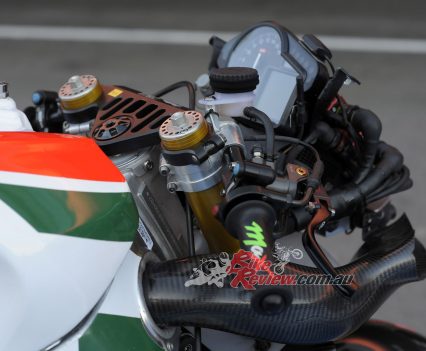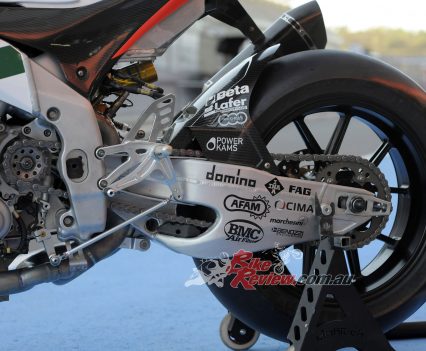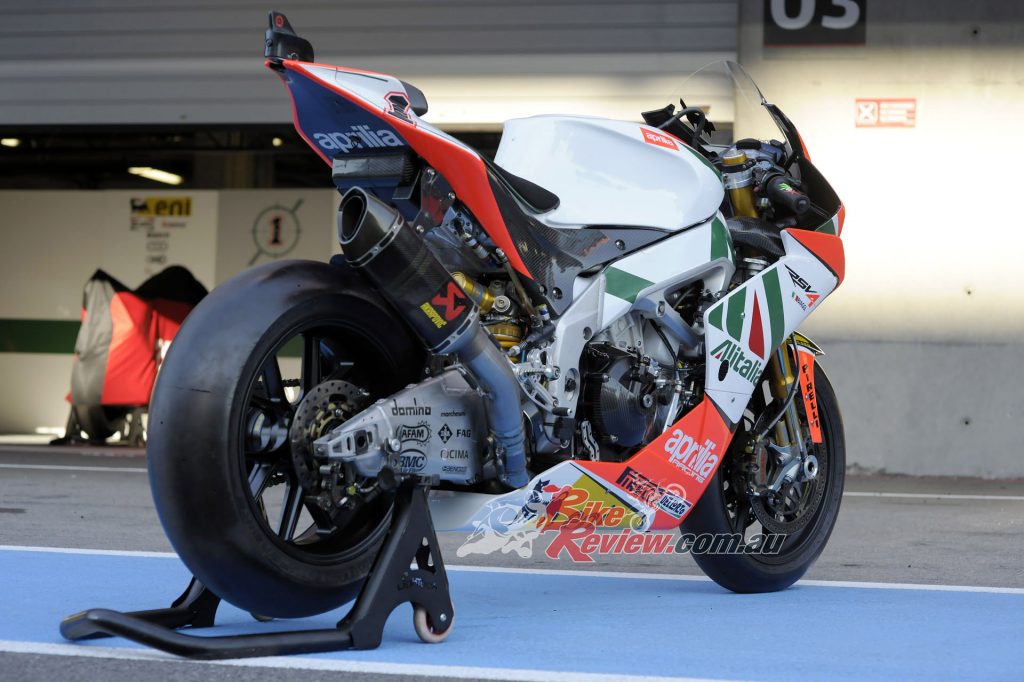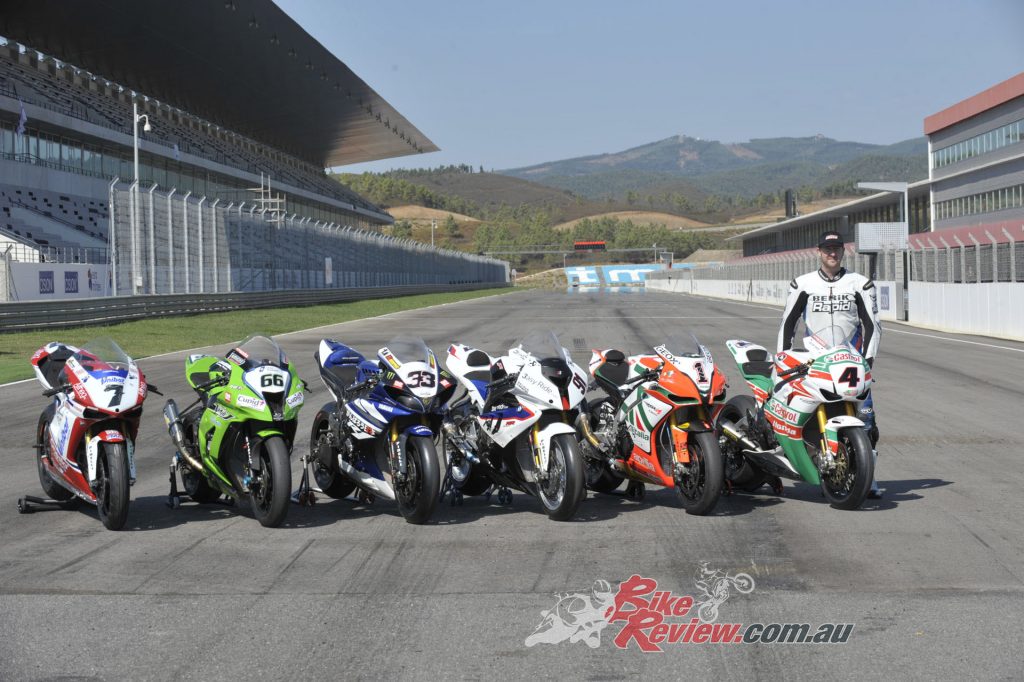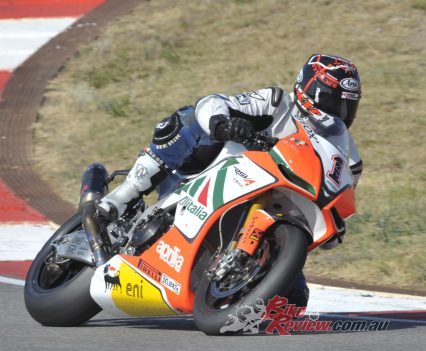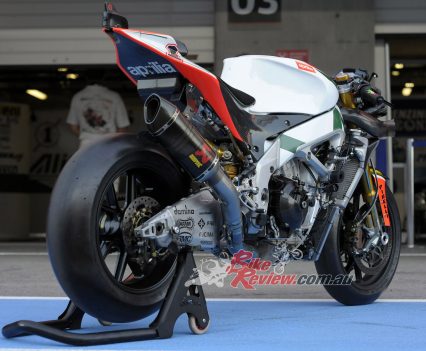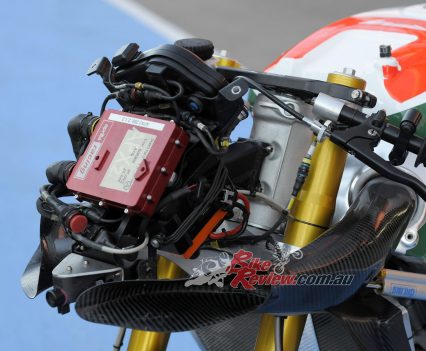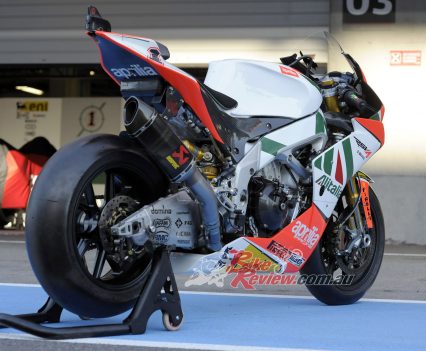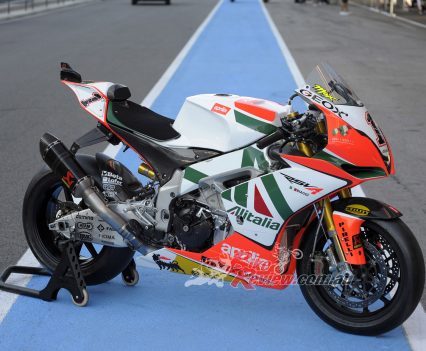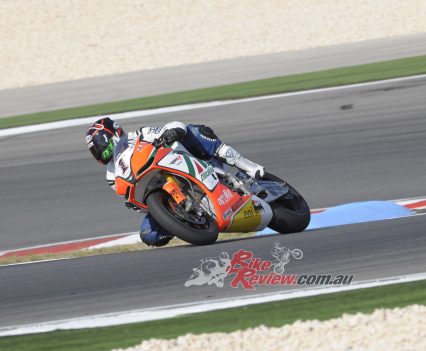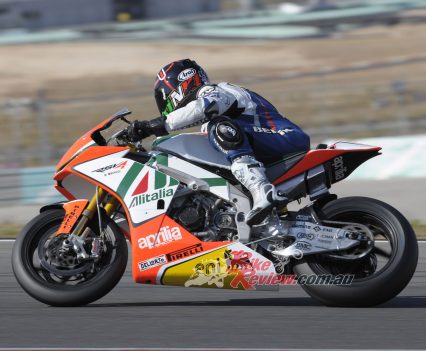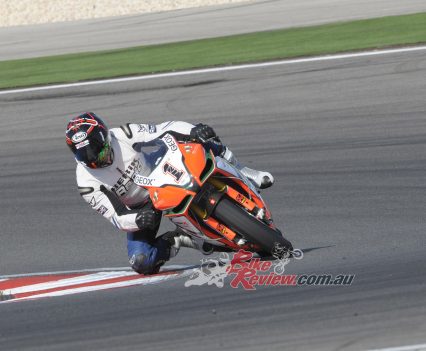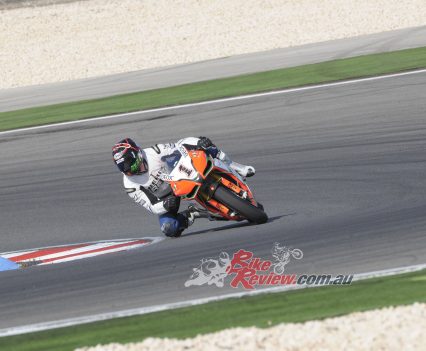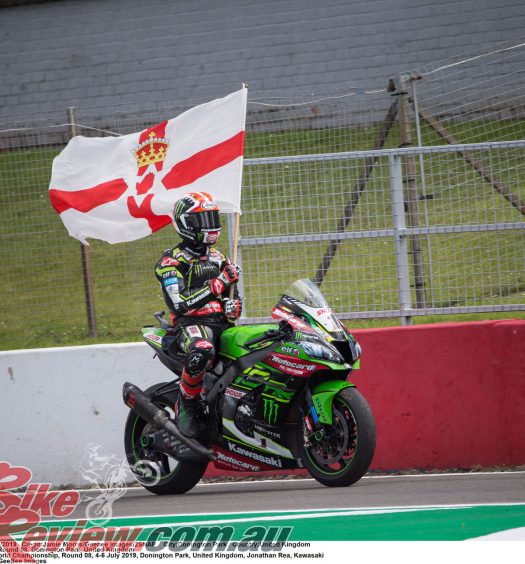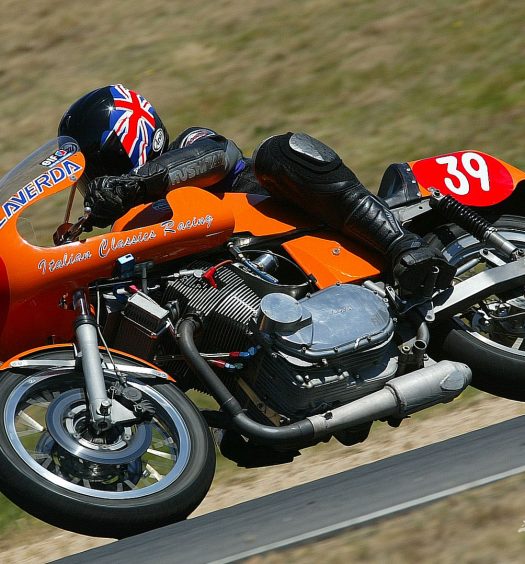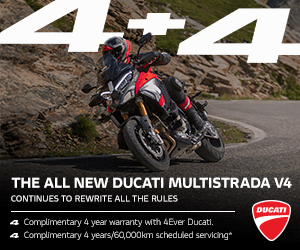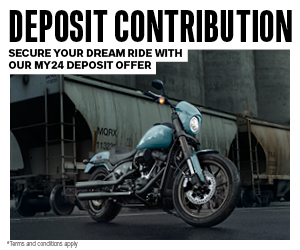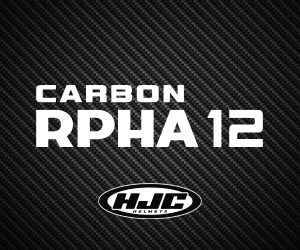Max Biaggi’s Alitalia Aprilia RSV4 was the trickest bike on the SBK grid a decade back. Jeff got to throw a leg over it at Portimao after the final round… Test: Jeff Ware Photography: Studiozac
The RSV4 is the closest of all the SBK machines to a MotoGP bike. From the start of the campaign in 2006, Aprilia focussed on building a race bike that was available on the street. Not turn a street bike into a race bike. We step back and ride the Max Biaggi RSV4 Factory.
The 65-degree V4 is small and compact and incredibly narrow, giving the Aprilia an immediate advantage in aerodynamics and ground clearance.
Prior to Biaggi’s arrival, along with his GP experience and GP experienced staff, the complicated and extreme adjustability of the RSV4 meant a lot of work for the technical staff and riders. With no data for the new model it was as common to miss the optimum setting as it was to find it. In 2010 the 2009 data proved invaluable and Max used that data to his full advantage – being fast from FP1 and gaining from there meant the Roman could go on to clinch the 2010 title in dominating force on the 220hp Aprilia.
During 2010 the Aprilia was clearly the fastest machine and more often than not set the fastest lap and the fastest top speeds. It also had the most sophisticated electronics with an in-house EFI system utilising gyroscopes to provide inputs of the machine’s attitude on all planes of movement. Traction control, launch control, engine braking control and anti-wheelie were the bike’s stronger points.
The bike runs Ohlins suspension – TTX40 rear shock and 42mm TRVP25 forks but incredibly, a stock frame with a factory race swingarm. Biaggi also prefers conventional to gas charged forks that most the others run as although it is in a smaller window of available performance, Max feels he can find a more ideal and accurate setting with them. As far as geometry goes, that remains unchanged for 90 per cent of the time and tracks in the season.

The Alitalia Racing RSV4 Factory was the most high tech bike on the grid in 2011. It was the nearest to MotoGP technology and it showed. It dominated in 2010 with Max cleaning up the title.
Roll on 2011 and things were not so rosy for Max. A string of bad luck really put a damper on his season and it all turned nasty from Miller Park onwards where Biaggi and the team seemed to lose their way. A series of odd mistakes from Max allowed Carlos Checa to gradually build an untouchable lead in the championship. A season ending foot injury meant Max missed two crucial races and by the time he returned for the final round at Portimao, Checa had well and truly Checked out!
I rode the bike the Monday after the final round in good weather conditions on one of my favourite circuits in the world. The bike was as ridden the day before – new tyres, that’s it.

Jeff rode the bike the Monday after the final round, it was as ridden on Sunday by Max, aside from wearing new Pirelli slicks. Interestingly Max only uses a one way (up) quickshifter, preferring to back-shift the old fashioned way.
THE RIDE
Walking into the Alitalia Racing Aprilia pits to be greeted by a friendly team and crew was a surreal experience. Made more so by the fact that I was watching the mechanics fuel up and fit new tyres to Max’s number one machine so I could go and ride the thing.
The bike is incredible. It’s so compact and narrow and has a real GP feel. Sitting on the bike I feel like I’m on a 250 grand prix machine (test on RSW250 here) not a superbike. The long narrow tank, low and angled clip-ons, tall screen and roomy seat with a small bump stop all scream of Aprilia’s long 250 history and it is evident that Max has made this bike feel like the 250s he had so much success on.
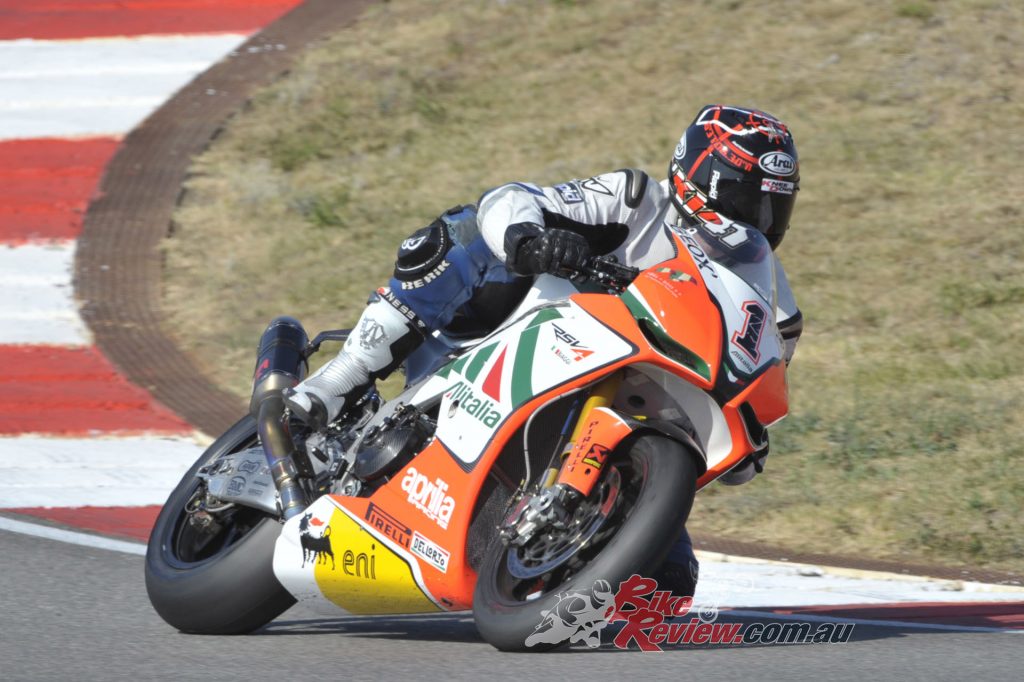
Max Biaggi’s Grand Prix experience and heritage shone through in the setup of his Alitalia Racing RSV4 Factory.
The team fire the machine into life and let me know it is geared for five gears around Portimao, as were most the other machines present. They also explained that although it is reverse shift and has a quickshift for upshifting that Max does not like the shifter for reverse shifting and it is not connected, unlike teammate Camier. I click up to first and like with the BMW, need a push and a heap of rpm to get going thanks to such a tall first gear.
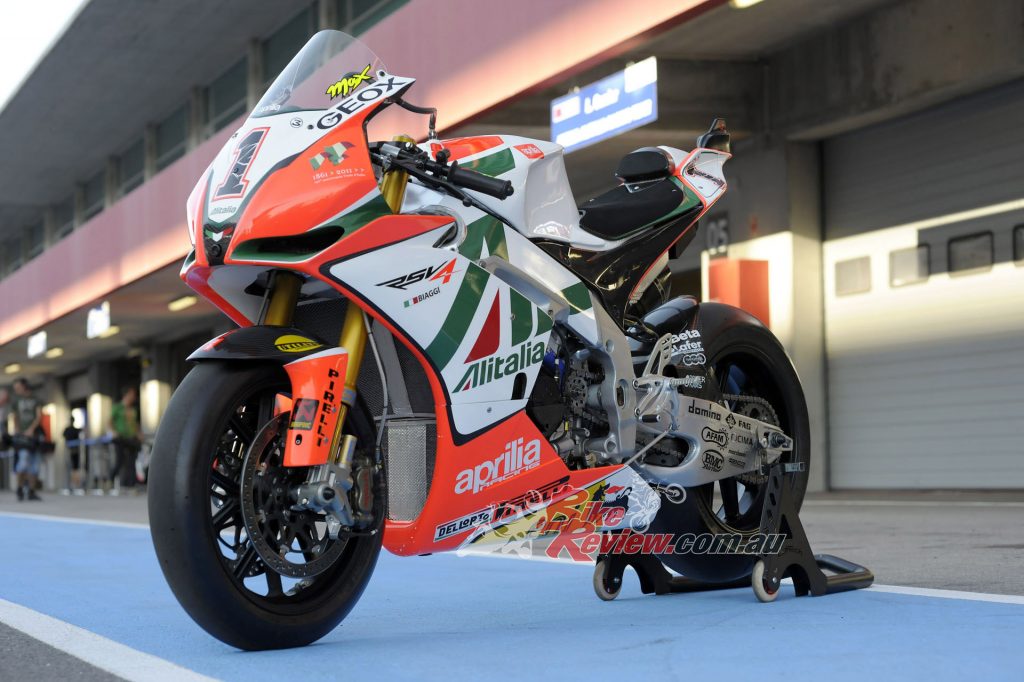
Biaggi dominated 2010 on the RSV4 but some small mistakes and a late season injury turned the tables in 2011.
Dozens of eyes are on me as I motor all the way down pit lane on the pit lane limiter before peeling out onto the end of the chute. By turn two, I’m hooked on this amazing machine and feel totally at home. These bikes really are, when good, on another planet compared to domestic bikes. It is amazing how good a world champion and a factory team can make a motorcycle work and make a rider feel instantly at one with the bike. Uncanny, really.
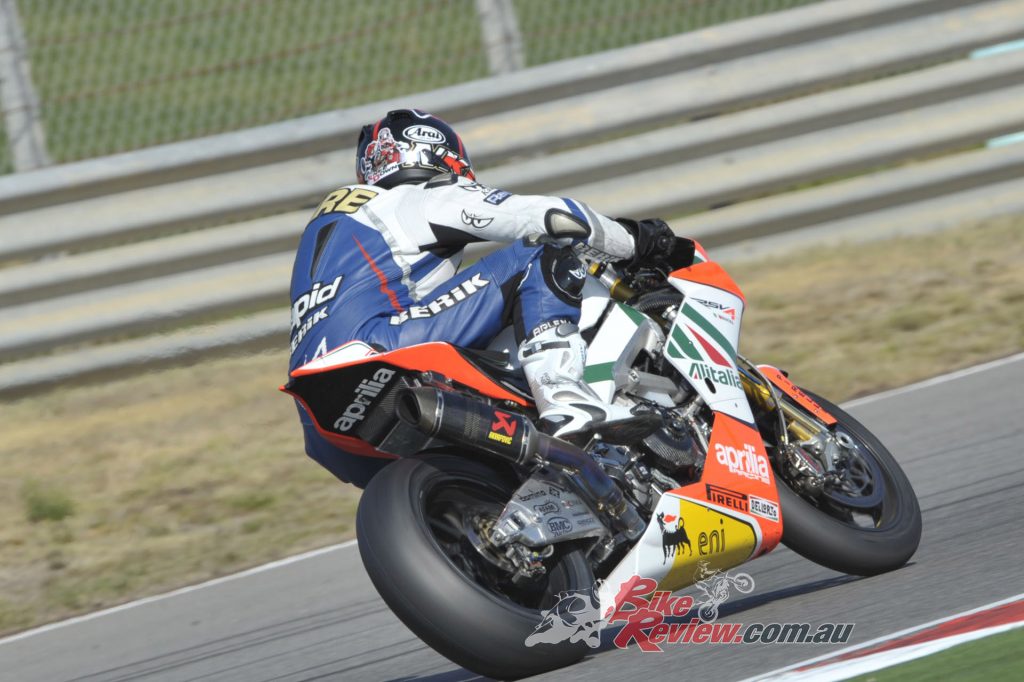
The RSV4 didn’t have the punch off corners that the Rea Honda, Sykes Kawasaki or Checa Ducati. Top-end though was another level. The RSV4 regularly topped the speed charts around the globe during 2010 and 2011.
Once I scrubbed in the new Pirellis I began to push and the responsive chassis characteristics of the RSV4 gave me the confidence to push my limits from the start. I could feel the history of the RS250 racing heritage coming through, funnily, even my own production based RSX550 engined 250 has similar characteristics, in the geometry and feel of Biaggi’s machine.
The suspension is incredible. Quite soft understandably as I weigh a lot more than Max, but the bike felt so good. Soft on the springs yet really well supported on the damping/valving. The action is so progressive through either the big undulations of the circuit or over the harsh bumps. At any time, the bike remained balanced and the wheels in contact with the tarmac. It was a great experience to feel such incredibly well set-up suspension and it felt like the Pirelli hoops were literally glued to the surface of the technical and undulating Portuguese track.
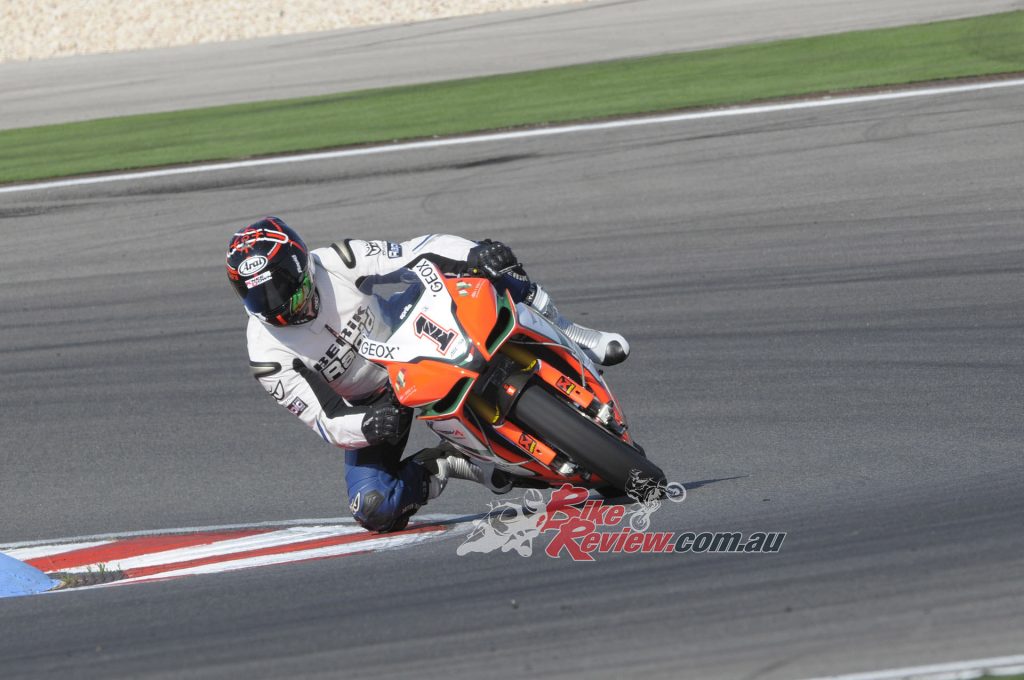
The steering on the RSV4 was the best of all the superbikes on the test day. Where you look is where you go, a geometry trait that is hard to acheive.
The steering action of the Alitalia RSV4 was the best of all the superbikes I sampled on the day and only Chaz Davies ParkinGO R6 was better. Think about where you want to go and you’re there. And the brakes? Sensational. Until you experience world superbike or MotoGP level brakes, you’ve never braked! The power and feel is like nothing I have experienced on any race bike or road bike. Eye-popping stopping power yet all with complete confidence. And feel. A true race bike, this one.
The front suspension feels solid and stable and you can really put the bike where you want to with accuracy and not have to think about what the bike is doing – you can concentrate on riding. The front end really gives the rider confidence – it was perfect. Very good steering.
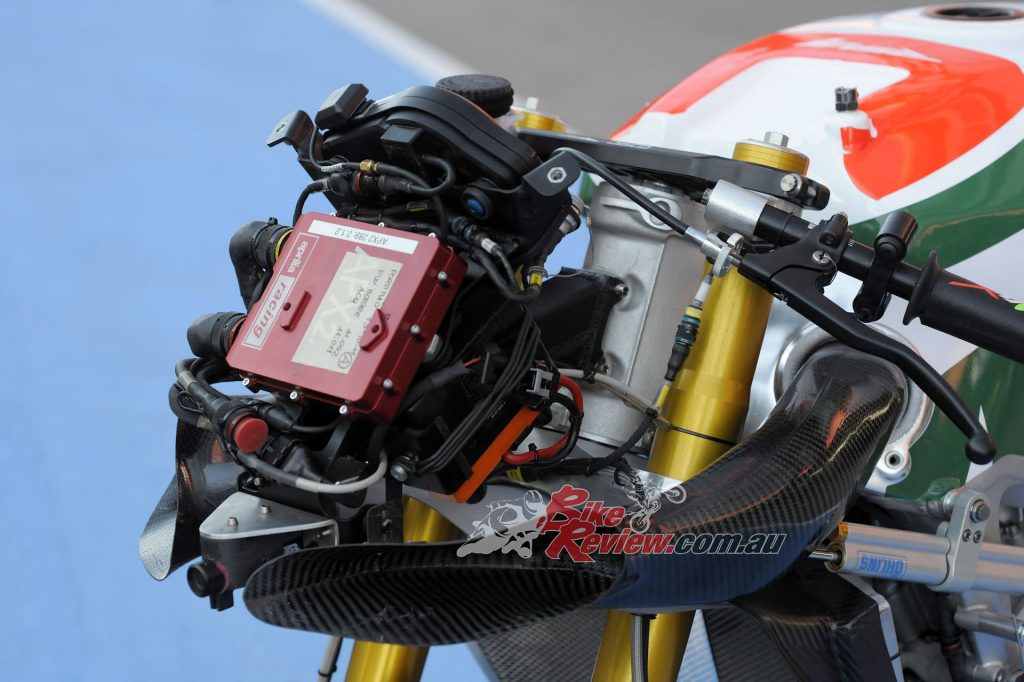
Fantastic steering. The frame is stock RSV4 Factory, the rest of the front-end is unobtainable kit of course.
Power-wise, the RSV4 has the speed and top end but I found the bike lacking a little in punch off turns compared to the Rea Honda, Sykes Kawasaki and Checa Ducati. However, the top-end was incredibly strong and had this amazing kick from 14,000 to 15,000rpm that had the front wheel momentarily lifting even in fifth gear! I’ve never felt anything like it – the team laughed and told me it was their secret nitrous oxide switch! The throttle was very smooth on initial pick-up and power delivery linear. The team have worked very hard developing and refining the variable velocity stacks in the intake system.

The 220hp, 163kg RSV4 was lifting the front wheel at 14,000rpm in fifth gear on the long Portimao straight!
The gearbox action was precise via the quick-shifter and the ratios were spot on for Portimao. However, I would have liked to try the bike with a reverse shifter like the other superbikes have.
Feedback through the seat and footpegs was fantastic and the clutch slip into corners was brilliant. I think there may have been a microswitch on the clutch pivot as when backshifting sometimes the bike would cut and drop down a gear as the clutch lever was pulled in.

The electronics package on the bike was less intrusive than the BMW and I was able to ride the bike much faster.
The electronics on the RSV4 were not intrusive like the BMW and I could not really even tell they were working, and was able to ride much, much faster than I could on the BMW. The Alitalia machine, like the road bike, is a well balanced, fast, light steering and confidence inspiring machine that will win many more World Championships and be a force in MotoGP in years to come.
SPECIFICATIONS – 2011 ALITALIA APRILIA RACING RSV4 FACTORY
Power: Over 220hp@15,000rpm
Wet weight: 163kg
Fuel capacity: 23L
Engine: Monoblock crankcases with integrated cylinders, 65-degree V4, eight-valve quad cam four-stroke, balance shaft
Bore and stroke: 78 x 52.3mm
Displacement: 999cc
Fuel delivery: Aprilia ECU wit RbW, traction control
Exhaust: Akrapovic Ti and Carbon
Gearbox: Six-speed cassette with straight cut gears
Clutch: Wet, electronic slipper clutch
Frame type: Twin spar alloy with adjustable swingarm, steering head and engine position
Wheelbase: Adjustable
Rake: Adjustable
Trail: Adjustable
Front suspension: Ohlins non gas charged (TTX internals)
Rear suspension: Ohlins TTX shock, factory swingarm
Front brakes: Brembo radial P4X34-38 calipers and 320mm rotors
Rear brake: Brembo P2X34 caliper and 218mm rotor
Front wheel: Marchesini, 3.50×16.5
Rear wheel: Marchesini, 6.25×16.5
Front tyre: Pirelli Slick, 120/75 – 16.5
Rear tyre: Pirelli Slick, 190/65 or 200/55 – 16.5
Instruments: Aprilia/Digitek
GALLERY ALITALIA RSV4 FACTORY



